Epidemiology: Policy Development Process
1/14
There's no tags or description
Looks like no tags are added yet.
Name | Mastery | Learn | Test | Matching | Spaced |
|---|
No study sessions yet.
15 Terms
Who are stakeholders?
Individuals or organizations invested in a program’s outcomes
What are the steps involved for Step 1 - Problem Identification?
identify the root cause via research, environmental scans, conversations with stakeholders
Identify the effect on human health (Step 1 - Problem Identification)
What are the outcomes and impacts?
Who is affected?
How big is the problem?
What contributes to the problem?
When and where is the problem likely to occur?
What is currently known?
Are there gaps?
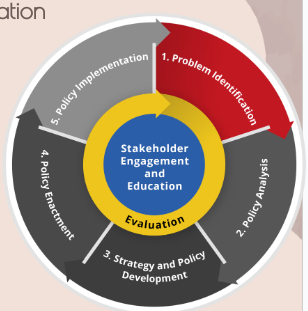
Who should be included in Step 2 - Policy Analysis
Partners and Specialists
Those Affected by the Policy
People Who Administer Resources
What are the steps involved for Step 2 - Policy Analysis?
select multiple policy options via research, environmental scans, surveys of others
consider health impact, cost of implementation, feasibility
rank options based on steps above. identify trade offs and figure out best option
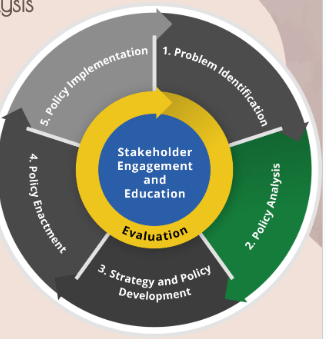
Who should be include in Step 3 - Strategy & POlicy Development?
People who can help design & develop the policy
What are the steps involved for Step 3 - Strategy & Policy Development?
Develop enactment strategy - use stakeholders with previous experience to assist where to start process
develop/draft the policy, look for pre-existing language in other policies
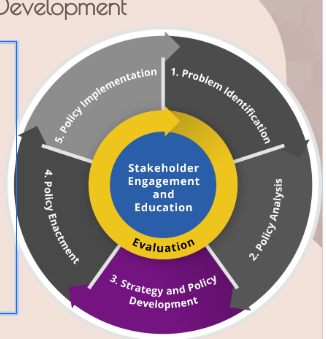
Who should be included in Step 4 - Policy Enactment?
Federal and state government agencies
Legislators
Public officials and administrators
Local and state board members
Both, people that are supportive and people that have concerns
What are the steps involved for Step 4 - Policy Enactment?
Process may require multiple tries
enactment is complete when it’s authorized by vote or passage of a bill
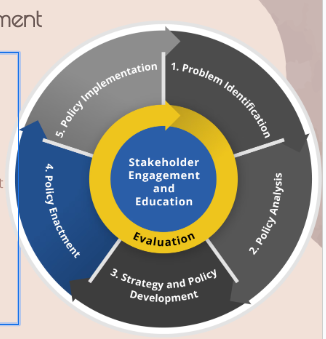
What are the steps involved in Step 5 - Policy Implementation?
An enacted policy will not automatically be successful, additional steps are necessary
Educate people/organizations affected by the policy
Identify/coordinate resources/support
Change pre-existing admin systems
Ensure current policy(s) do not conflict with new policy
Identify individual(s) that will lead implementation
Identify roles/responsibilities or partners/stakeholders
Identify opportunities for collaboration
Monitor/enforce the policy
Plan for policy, programmatic, and fiscal sustainability
Keep the desired outcomes in mind
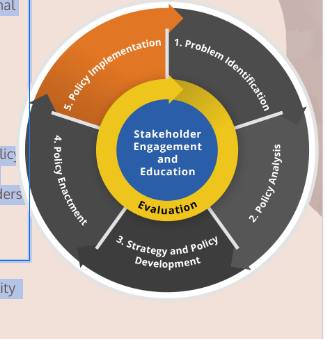
What are the steps involved for evaluation?
Continued evaluation to prove that the policy is efficient & effective
important to validate funding
Success or failure of a policy could influence other jurisdictions’ considerations of similar policies
Data driven: qualitative vs quantitative; a mixture of methods
Provide public accountability and transparency (trust and credibility)
What are the 3 types of evaluation?
Performance Monitoring- ongoing evaluation of how the process is performing
Outcome Evaluation- Is the program meeting its goals?
Cost-Benefit Evaluation- Ensuring the benefit(s) of the program outweighs the cost of implementation
What are the indicators used in evaluations?
Status change: Improvement of a population’s health care status
Environmental changes: Factors in environmental variables that have changed
Change in knowledge: A population’s acquisition of new knowledge that enables them to make educated decisions
Change in behavior: Population’s adoption of new behaviors/amending existing ones
Affective change: Population’s change in feelings/outlook about a particular issue or behavior
What are some challenges in evaluation?
All of these changes are going to occur when a program is rolled out but what percentage of those changes can be directly attributed to the program vs which would have naturally occurred anyway?